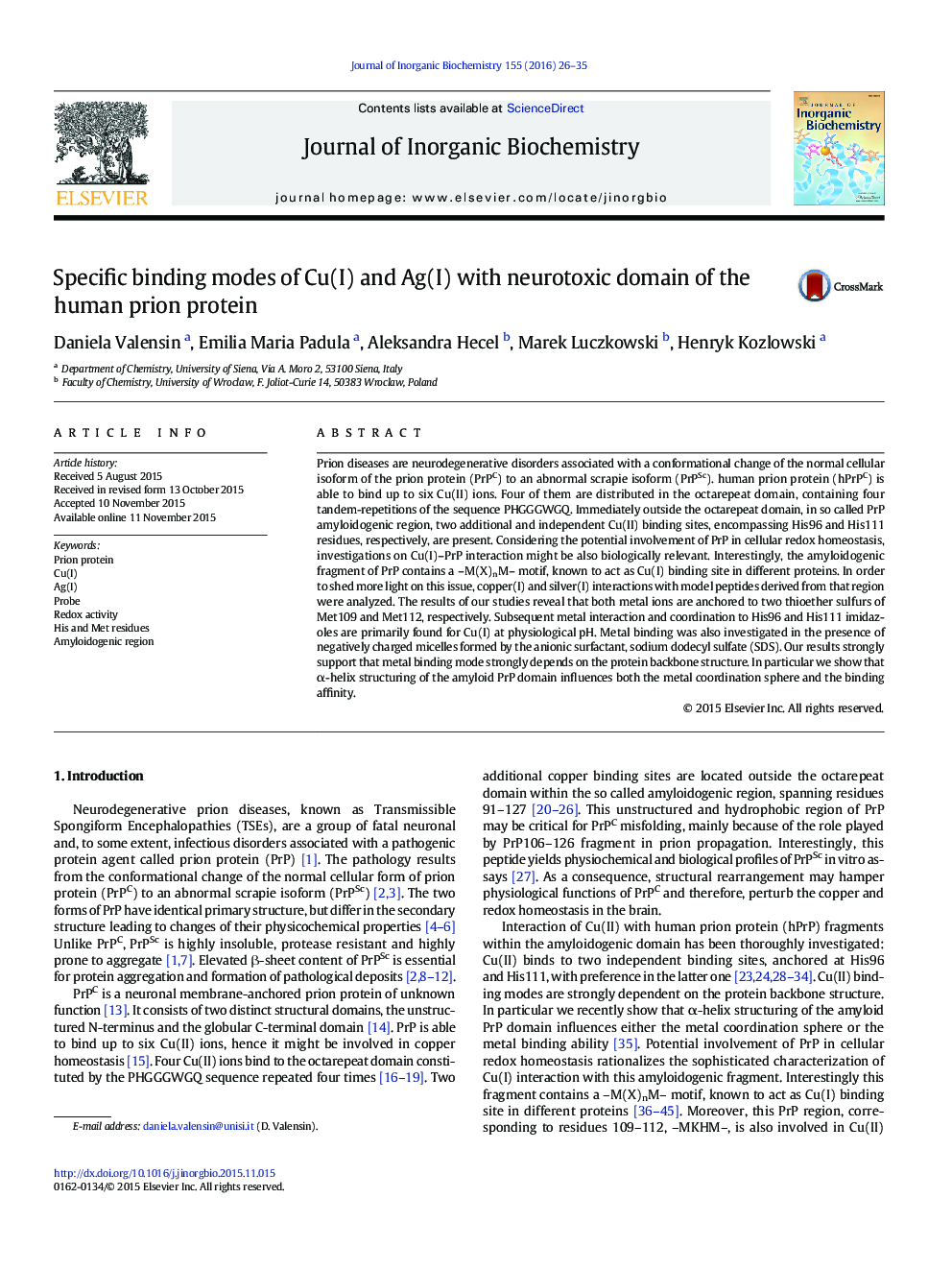| Article ID | Journal | Published Year | Pages | File Type |
|---|---|---|---|---|
| 1316972 | Journal of Inorganic Biochemistry | 2016 | 10 Pages |
•Met and His residues are the primary copper(I) binding sites within hPrP(91–127) region.•No specific structural rearrangements of hPrP(91–127) occur upon Cu(I) interactions.•Met109 and Met112 thioether groups are the binding sites of Ag(I)–hPrP(91–127) complex.•Ag(I)–hPrP(91–127) complex is stabilized by His side chain interactions at pH 7.•The α-helix structuring of hPrP(91–127) is critical for Ag(I) binding.
Prion diseases are neurodegenerative disorders associated with a conformational change of the normal cellular isoform of the prion protein (PrPC) to an abnormal scrapie isoform (PrPSc). human prion protein (hPrPC) is able to bind up to six Cu(II) ions. Four of them are distributed in the octarepeat domain, containing four tandem-repetitions of the sequence PHGGGWGQ. Immediately outside the octarepeat domain, in so called PrP amyloidogenic region, two additional and independent Cu(II) binding sites, encompassing His96 and His111 residues, respectively, are present. Considering the potential involvement of PrP in cellular redox homeostasis, investigations on Cu(I)–PrP interaction might be also biologically relevant. Interestingly, the amyloidogenic fragment of PrP contains a –M(X)nM– motif, known to act as Cu(I) binding site in different proteins. In order to shed more light on this issue, copper(I) and silver(I) interactions with model peptides derived from that region were analyzed. The results of our studies reveal that both metal ions are anchored to two thioether sulfurs of Met109 and Met112, respectively. Subsequent metal interaction and coordination to His96 and His111 imidazoles are primarily found for Cu(I) at physiological pH. Metal binding was also investigated in the presence of negatively charged micelles formed by the anionic surfactant, sodium dodecyl sulfate (SDS). Our results strongly support that metal binding mode strongly depends on the protein backbone structure. In particular we show that α-helix structuring of the amyloid PrP domain influences both the metal coordination sphere and the binding affinity.
Graphical abstractNew insights on the role played by His and Met residues in Cu(I) and Ag(I) binding to hPrP91–127 fragment.Figure optionsDownload full-size imageDownload as PowerPoint slide
